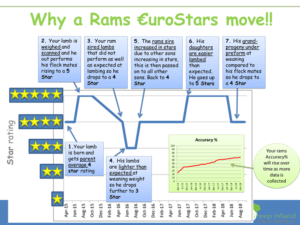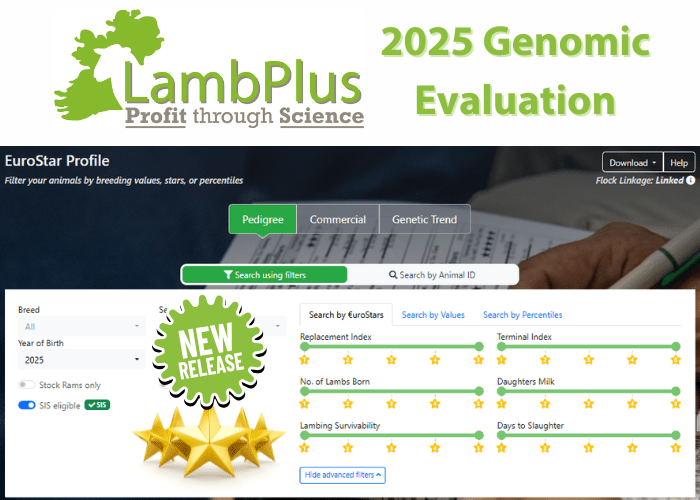The first evaluation of this year with the 2025 born lambs included, has been published this week.
The first evaluation can be a milestone for breeders as they get their first glimpse of how their 2025 lamb crop has been ranked.
The genomic evaluation will be running every week, so breeders can expect changes while new animals and data are being recorded, along with the genomic information added after genotyping.
There has not been any updates made to the evaluation for 2025.
Any move in an animal’s rankings is due to new data being included in its evaluations (data recorded on the animal itself, its ancestors or progenies).
Relative emphasis on the indexs
This is the current Relative emphasis for each index:

Ewe Methane (g CH4/day)
In 2023 we launched a new breeding value for sheep aimed at reducing methane emissions and supporting the delivery of climate emission reductions. This is a stand-alone trait and represents the difference in methane output of the ewes bred from the animal. This value doesn’t capture differences due to other aspects such as weight and fertility. The higher the value, the more methane the animal will produce. This trait is not included in the Replacement or Terminal Index.
Why do €urostars change and how often?
The €uroStars are updated on a weekly basis. The €urostars are based on the most recent data available before each week’s genetic evaluation. The date of the latest published €urostars will be indicated in the top right-hand side of the sales card in catalogues and on the ram search. As more new information becomes available, this will be reflected in the animals €uroStars. This could mean the animals €uroStars increasing or decreasing, depending on the new data. Using high accuracy % rams will minimise evaluation movements.
The DQI also helps to minimise the significant fluctuations in the €urostars. The DQI encourages farmers to input data in a timely manner to reduce sudden fluctuations occurring in the €urostars. Where farmers input a large volume of data at one time ie. lambing information along with 40-day and 100-day weights all at the same time, this will cause a surge of information flowing into that animal’s genetic evaluation which can result in movements in €urostars. Where animals have a low accuracy %, again these €urostars will be more likely to fluctuate as more data is recorded on that bloodline in the future.

Each of the €urostars are broken down into percentiles which facilitates farmers in identifying the top % of the best genetics within a particular breed, ie a 5 star Texel ram – is in the top 20% within the Texel breed.
 €urostars broken down into percentiles
€urostars broken down into percentiles
€uroStars attached to an animal remain to be WITHIN BREED, ranking each index in 20% groupings. The higher the stars, the higher the predicted profitability from that animal within that breed.
€uro values of each trait and index can be compared ACROSS BREEDS, which allows any two rams to be compared to each other regardless of breed.


